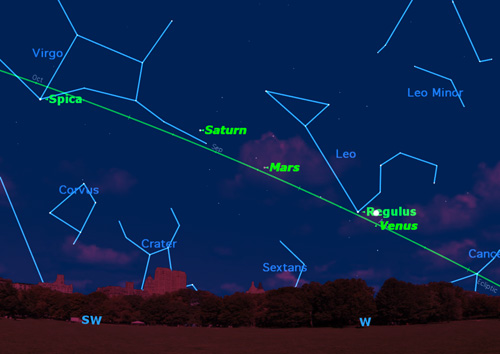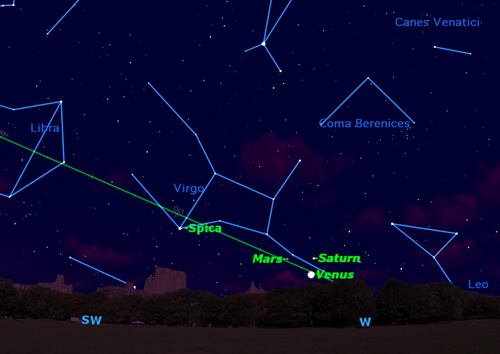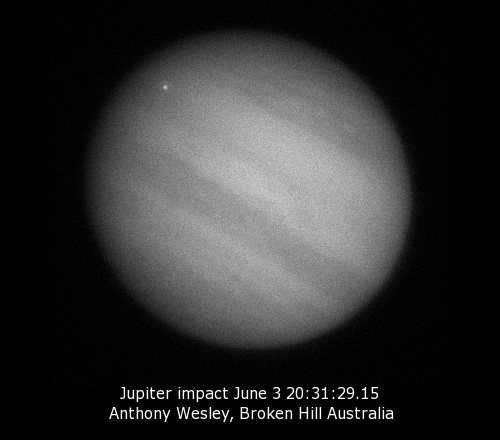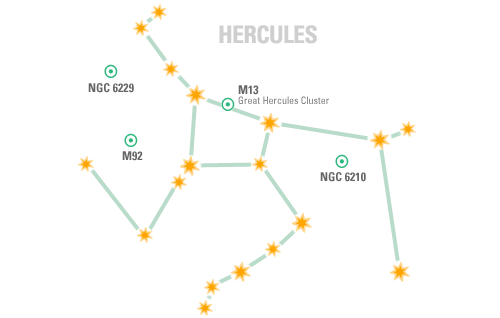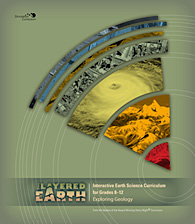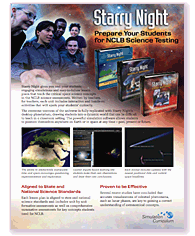 |
||||||||||||||||||||||||||||||||||||||||||||||||||||||||||||||||||||||||||||||||||||||||||||||||||||||||
For education orders please call 1-877-290-8256. Welcome again to our monthly newsletter with features on exciting celestial events, product reviews, tips & tricks, and a monthly sky calendar. We hope you enjoy it!
If you take a look at the western sky a short time after sunset this week, the first thing that will catch your eye will be the brilliant planet Venus. As the sky gets darker and you look more closely, you will be able to see two more planets, Saturn and Mars, along with two first magnitude stars: Regulus in the constellation Leo, and Spica in the constellation Virgo. This is the way they will look on July 7, with a spread of 32 degrees between Saturn and Venus:
A month later, the view will have changed to this:
The three planets are now less than five degrees apart. Saturn has hardly moved at all, but Venus has moved very close to Saturn and Mars has overtaken and passed Saturn. To see how this unfolds, you can view this movie <Gathering.mov> or open this file <Gathering.snf> in Starry Night, advancing the day one step at a time. What is happening here? Saturn is far from the Sun and takes 29.3 years to make a complete circuit of the Sun. The result is that it moves very slowly with respect to the background stars. Venus and Mars, on the other hand, are close to the Sun, and take 0.6 and 1.9 years respectively to complete their orbits. Their faster speed and closer proximity to Earth makes their motion across the sky far faster than Saturnís. Such a gathering of the planets is called a conjunction. Conjunctions of two planets are pretty common; they occur several times each year. Conjunctions of three planets, like this one, are much rarer. A conjunction of all the planets is so rare that it has probably never happened in the entire 4.5 billion year past of the Solar System, and probably will never happen in the future. Planetary conjunctions were of great interest to the ancient astrologers. They are of less interest to modern astronomers except as pretty sights to observe. Because gravity is a force which acts as the inverse square of distance, the gravitational force exerted by the other planets on the Earth is so small as to be unmeasurable. Because of its proximity, the Moon has an immense effect on the Earthís tides. Much larger but much farther away, the Sunís gravity is a secondary force in Earthís tides, causing spring and neap tides. Even if all eight (or nine) planets are arrayed together, they have not the slightest effect on each other, or on the Earth. Geoff Gaherty
You may remember that almost a year ago, a new dark spot was discovered on Jupiter. It was thought to be a scar left over from the impact of a comet or asteroid, just like the ones seen after the impact of Comet Shoemaker-Levy 9 on Jupiter in 1993. The discovery of the 2009 scar was made by Australian amateur astronomer Anthony Wesley, who seems to have his telescope trained permanently on the solar system's biggest planet. Early in June of 2010, he was taking images of Jupiter when a brief bright flash of light appeared in the planet's atmosphere, and quickly faded. A few thousand kilometers north, in the Philippines, Christopher Go had captured images of the same event. (NASA's follow up images reveal no trace of a long-lasting scar this time, so it seems that this was relatively small compared to other impacts we've observed on Jupiter.) Visit Anthony Wesley's website to see the original discovery images and some video.
Click here to download a file that you can load into Starry Night to show the locations of both the July 2009 and June 2010 impacts on Jupiter. Notes on Chris Go's Jupiter observing page mention that the impact happened in the “faded SEB”, which brings us to the other big change to Jupiter in early 2010. The SEB, or Southern Equatorial Belt, is one of Jupiter's iconic red-brown stripes. There's one in Jupiter's northern hemisphere (appropriately called the NEB) and one in the southern hemisphere. Every few years the SEB fades somewhat, becoming a less intense shade of red, but this year it seems to have vanished completely! It's expected to come back, but nobody's quite sure when. Scientists speculate that the mechanism for the fade might be the development of high-altitude ammonia ice cloud layers above the dark belt (similar to the water-ice cirrus clouds that form in the high atmosphere of Earth). Jupiter is moving away from the Sun as seen from Earth, so it's getting easier to observe, and someone will be watching when the SEB starts to reappear – and maybe when the next unfortunate little rock plunges into Jupiter's atmosphere. Brenda M. Shaw thinks Jupiter needs to learn some common decency and go put on some trousers.
In the last issue of Starry Night Times, we saw that the Sun reaches its maximum northern declination at the June solstice. Conversely, the December solstice sees the Sun reach its maximum southern declination. Thus folks in the southern hemisphere enjoy the beginning of the summer season. But what about the South Pole? Just like in New York, the Sun reaches its greatest altitude on the first day of summer. Of course, at the South Pole, the first day of summer occurs in December. Here we are at 90 degrees south latitude on December 21 at about local noon.
Note that the Sun is due north at an altitude of about 23.5 degrees. Six hours later, we would expect the Sun to be much lower in the sky.
But no, the Sun’s altitude is still about the same! And, not surprisingly, it is still due north. After all, at the South Pole every direction must be north. But why is the Sun not setting? Part of the answer lies in the diurnal motion of the sky as seen from the poles. Rather than rising or setting, all visible stars simply move parallel to the horizon remaining a the same altitude. So any object that is visible in the sky remains visible 24 hours a day. The Sun, however, moves along the ecliptic and, because of the Earth’s axial tilt of 23.5 degrees with respect to the equator, only half of the ecliptic is above the polar horizon. On December 21the Sun happens to be on the part of the ecliptic which has the greatest altitude (23.5 degrees) and that part remains at the same altitude all day long. So at midnight the Sun is about the same altitude as at noon and we appear to have perpetual daylight. Using Starry Night, we can remove the effects of the atmosphere and see the Sun’s position against the background of the stars...
Unlike the stars, the Sun moves relatively quickly along the ecliptic and will gradually lose altitude as the ecliptic dips towards the horizon. Use the file <MidnightSun.snf> to see for yourself how the Sun slowly sinks towards the horizon and night begins to fall at the South Pole. The answer to last month’s question should be obvious to you now: At the South Pole, the Sun reaches a maximum altitude of about 23.5 degrees at the December solstice. Here is this month’s question: How long does daylight last at the south pole and when does the Sun finally set? Check the next Starry Night Times for the answer. Herb Koller
New Horizons New Horizons is a spacecraft currently en route to the dwarf planet Pluto. It will be the first spacecraft fly by of Pluto and its moon Charon, Hydra and Nix. You can view the New Horizons spacecraft (and dozens of others) and its current and future path in Starry Night. When will New Horizons reach Pluto? Pedro Braganca
The fifth largest constellation in the sky, Hercules is perhaps most famous because of the Great Hercules Cluster, M13, perhaps the most prominent of globulars visible to northern hemisphere observers.
The Great Hercules Cluster is visible to the naked eye at dark sites. The glob is about 14 billion years old and contains more than a million suns. Because of its proximity to M13, M92 is often overlooked even though it's one of the brighter clusters available to northern viewers. One of Johann Elert Bode's discoveries in 1777, it was rediscovered by Charles Messier in 1781 and has been clocked speeding toward us at 112 km/sec. NGC 6229 is another globular cluster that's worth a look. Mistaken for a nebula by Herschel in 1787, it was revealed to be a "very crowded cluster" in the mid 1800s. NGC 6210 is a planetary nebula, a sun not unlike our own in the final stages of its life. It has a very high surface brightness and is a good target for high magnification. Sean O'Dwyer
|
JUL 2010
|
|||||||||||||||||||||||||||||||||||||||||||||||||||||||||||||||||||||||||||||||||||||||||||||||||||||||
 |
||||||||||||||||||||||||||||||||||||||||||||||||||||||||||||||||||||||||||||||||||||||||||||||||||||||||
|
||||||||||||||||||||||||||||||||||||||||||||||||||||||||||||||||||||||||||||||||||||||||||||||||||||||||
